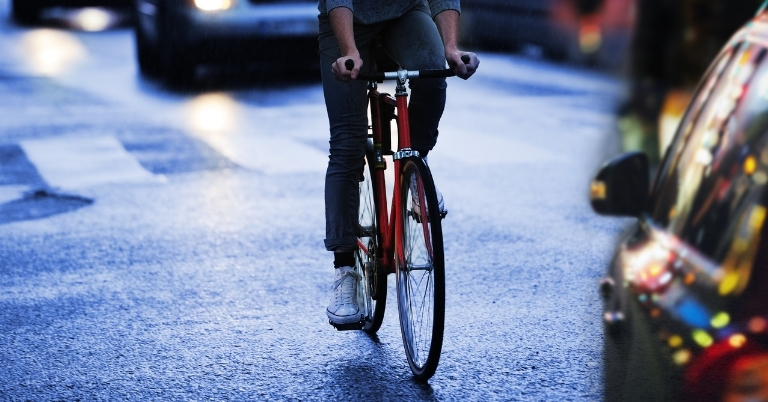
Request Free Consultation
To get answers to questions about your injury, contact Catalano Law for a FREE case evaluation. We’ll assess your case, explain your legal options, and recommend the next steps at no cost. We’re here when you need us.
Contact Form
General Contact Form

Every year, more people turn to bicycles for commuting. Bikes are cheaper than cars or motorcycles and easier to store. They also keep you healthy through exercise. However, you may be surprised to learn that in New York, bicyclists are subject to the same traffic laws as other vehicles on the road.
Although this may seem unfair to cyclists, the laws actually act in their favor. By following the same traffic laws, bicyclists receive protection from injury and shared liability in the event of a collision. We’ll go over the traffic laws cyclists must follow, how it affects their liability after a collision, and how working with a New York bicycle accident lawyer after a crash can help you.
Rules of the Road
Cyclists and motor vehicle operators must follow the same traffic laws. For instance, bicyclists must obey traffic lights and signs, and signal when turning. This applies whether they are on a roadway with cars or on a pedestrian walkway. Bicyclists can even receive tickets for violating traffic laws. Additional traffic laws that apply to bicycles include:
- Ride with traffic in a bicycle lane, right shoulder, or right curb of the road
- Avoid riding on sidewalks where prohibited
- Ride single file when passing vehicles, other cyclists, or pedestrians
- Ride no more than two abreast on roadways
- Use the same turning lanes as motor vehicles
- Give pedestrians the right of way
- Equip the bike with brakes, a bell or horn that can be heard 100 feet away, a headlight and taillight, and wheel reflectors
- Refrain from wearing more than one earphone
There are several additional legal requirements for bicyclists; however, these are the most common that apply to both the drivers of motor vehicles and bicycles.
How Traffic Laws Protect Bicyclists
Traffic laws work to protect motorists and bicyclists. The shared requirements to use public roadways for cars and bikes create structure and consistency for drivers and cyclists so that each knows what to expect on the road. This helps prevent accidents and injuries and establishes liability in the case of a collision.
Preventing Injuries
As a bicyclist, it is important to follow traffic laws and bike safety regulations to prevent injuries. For instance, the law outlines how a cyclist should signal turns and stops. If cyclists and motorists abide by this law, there is less likelihood of a collision with a driver who may think the bicyclist is continuing straight when they are not.
A similar example is a regulation that tells cyclists to stay on the right-hand side of the road. This law promotes uniformity and consistency as to where a motorist expects to see a bicycle. Drivers can check the right-hand shoulder for cyclists and make room for them on the roadway. This leads to fewer accidents because everyone is following the same set of rules.
Establishing Liability
Proving liability can be complex in New York due to the no-fault rules and comparative negligence laws. However, with bikes and vehicles under the same traffic regulations, it becomes easier to conclude who is at fault for an accident.
Drivers of motor vehicles must exercise due care when sharing the roadway with bicycles. This means that a driver is to give the necessary attention to the road and take the safety of bicyclists into account. For instance, a driver who ignores a law-abiding cyclist’s turn signal and causes an accident is probably going to be held liable for the bike owner’s injuries.
Unfortunately, many situations are not this clear-cut. Cyclists often fail to follow the traffic laws, which puts them partially at fault. If you are injured in a bicycle accident where you failed to signal correctly or drifted too far into the road, you may be found partially liable for the accident. You can still file a lawsuit for compensation from the other driver, but depending on your percentage of liability, you will receive a lesser amount because of New York’s comparative negligence law.
Navigating the Legal Terrain After an Accident
Not only are no-fault and comparative negligence laws complex and challenging to navigate, but there are also regulations about when to file injury claims and report accidents in New York. For instance, you must report a bicycle crash involving death or serious injury within 10 days to the DMV. If you are knowingly involved in a collision that causes serious injury and fail to report it, you can be charged with a misdemeanor.
It is best to contact a Syracuse bicycle accident lawyer soon after a collision to explore your legal options.
Speak to a Bicycle Accident Lawyer Today
If you or a loved one suffered injuries due to a bicycle accident, contact Catalano Law today for a free consultation. Our team can review the circumstances surrounding your case and help you explore your legal options. With over 20 years of bicycle accident and personal injury case experience, we can fight for your rights and help you seek the compensation you deserve.

